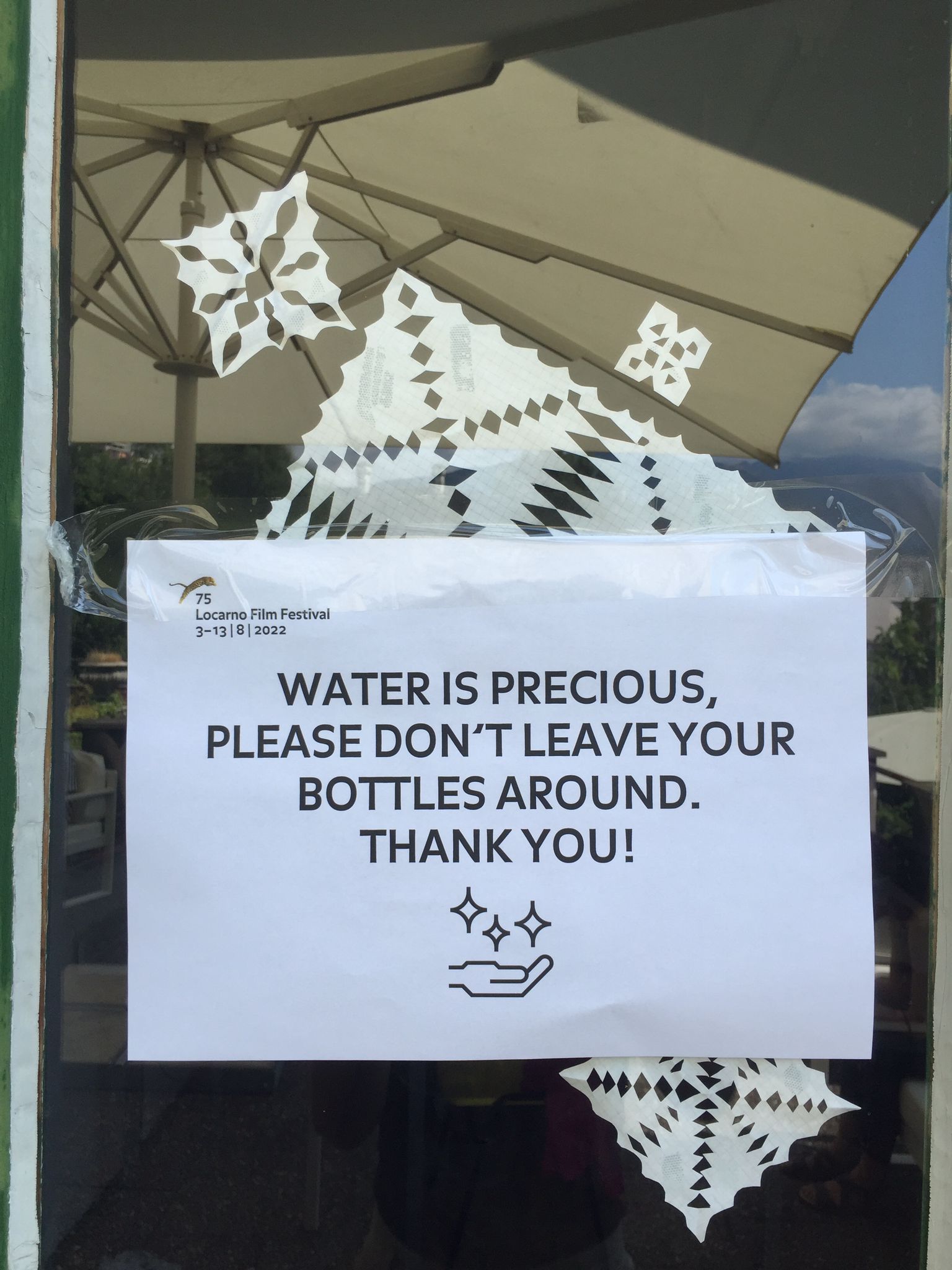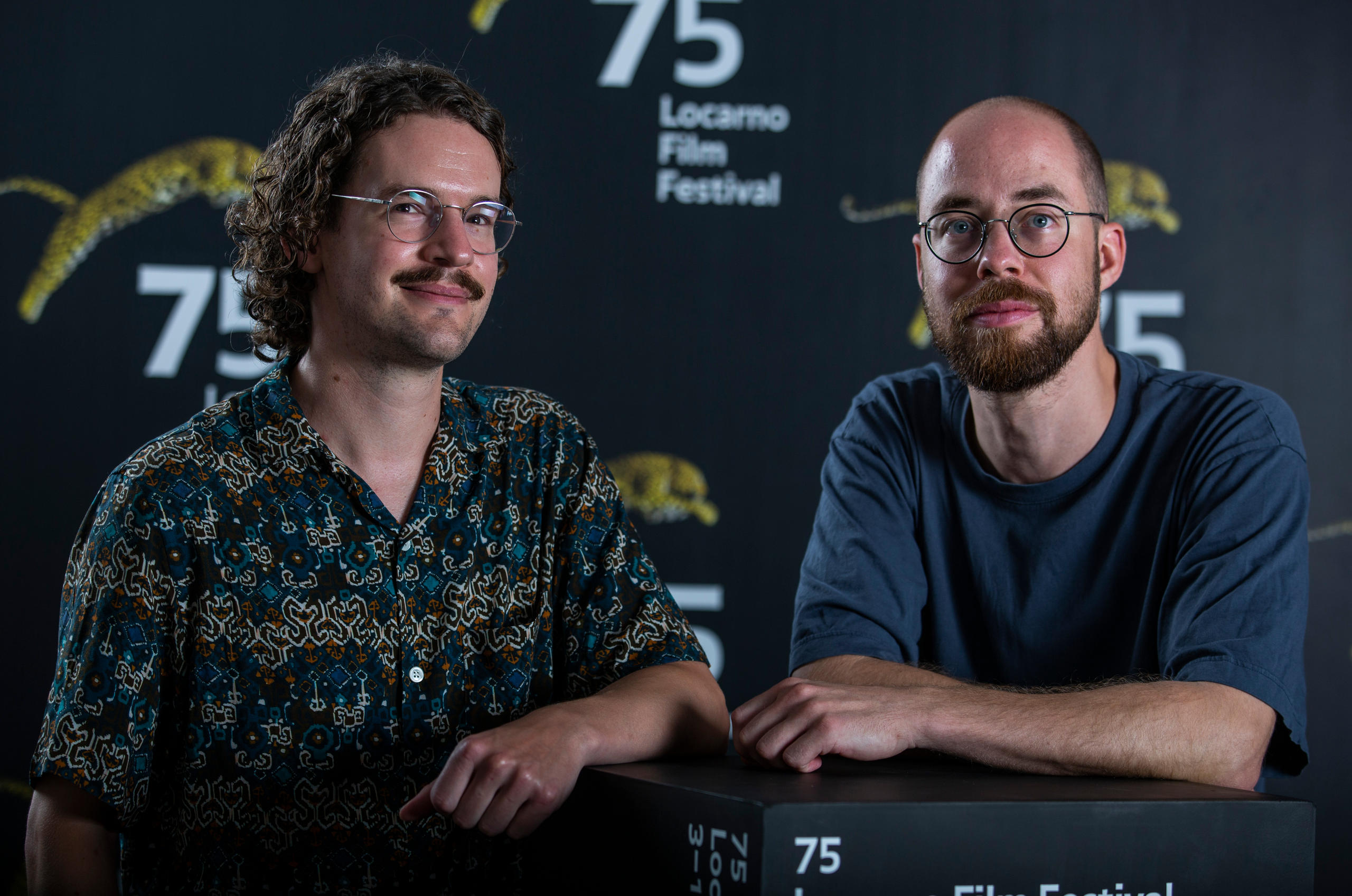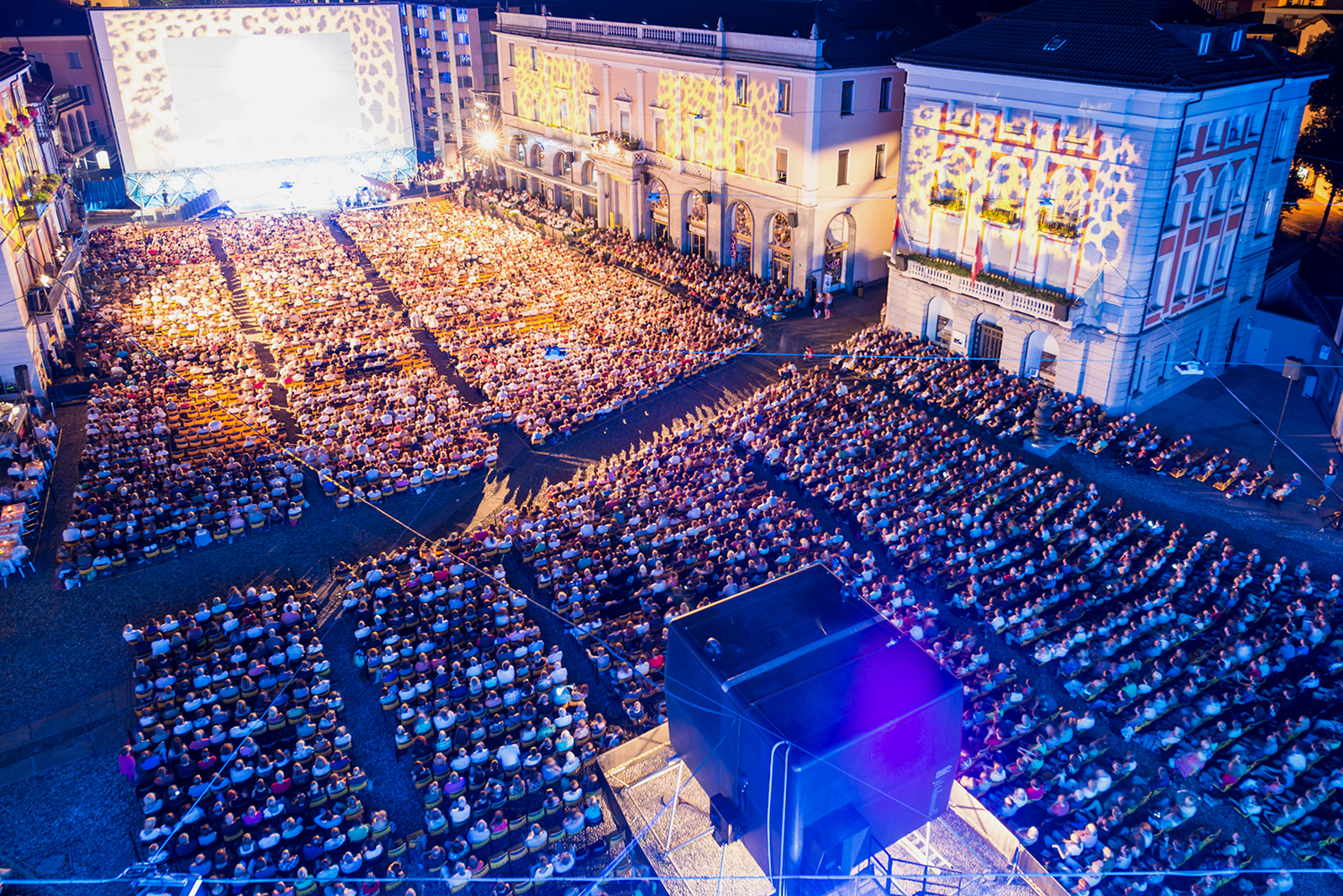Locarno Festival goes green, but many shades of grey still loom
The Locarno Film Festival is doing its bit in the fight against climate change by introducing a new green award. Swiss film critic Emily Jourdan examines the event’s efforts for the environment and wonders if it’s just more green-washing in an emissions-heavy industry.
On its 75th anniversary, the Locarno Film Festival is adding a green award to its emblematic black and yellow colour palette. As part of its launch of the Green Film Fund, the festival is introducing the Pardo Verde WWF prize in support of sustainability in cinema.
A select jury of experts will choose one film from the festival programme that best reflects an environmental theme. The winner not only receives the green version of the famous leopard statue, but is also awarded CHF20,000 ($21,300).
The idea behind this initiative is to highlight and support films that raise awareness about sustainability and inspire audiences to adopt ecological practices.
This is not the first time the Locarno Film Festival is taking a stance on environmental issues. In 2010 the festival committed to becoming a climate-neutral event by offsetting its carbon emissions. For the past decade, screenings on the Piazza Grande in the heart of the city have been powered using renewable energies.
Film sector: wasteful
The festival, however, still plays a big part in a much larger industry that has been criticised for its high CO2 emissions – and for good reason. It is not a secret that the film sector is extremely wasteful and produces high emissions each year. At the same time, audiences are becoming more critical and accusations of greenwashing have raised standards for what is deemed eco-friendly.
According to the Sustainable Production Alliance (SPA), the average carbon footprint of a big-budget film is 33 tonnes per shooting day. In comparison, one tonne of CO2 is equivalent to an average car driving for 3,7000 kilometres – or once around the world.
Fifty percent of the total emissions alone are due to fuel use and 24% to air travel. Waste is another problem: leftovers from catering, set construction, costumes and textiles all land in the bin once production wraps.

This data is basic knowledge within the industry. In fact, there are a number of organisations, such as ALBERT Sustainable Production CertificateExternal link in the UK, that are trying to help the industry by providing carbon calculators and sustainable production plans. So how can the Locarno Film Festival give out an award for sustainability in film that does not take production procedures into consideration?
The Green Pardo WWF is not the festival’s only sustainability project that is riddled with inconsistencies. For years now the Locarno festival has been trying to present itself as an eco-conscious event. “We love everything green,” the organisers write on their website, in an attempt to put festival-goers and cinephiles at ease.
“Going green”
Typically, when institutions and events say they are “going green”, one of their first efforts is to reduce waste. The Locarno festival is no exception. According to the festival’s most recent sustainability report, organisers are introducing reusable cups and promising to start properly disposing of waste generated by the event.
What is conveniently left out is the fact that the festival’s sponsor, San Pellegrino, is providing all of the venues, events and press conferences with plastic water bottles, which produces enormous amounts of waste. This comes on top of the printed material that cinema-goers can find across the city, from the Locarno Daily to programme and information leaflets.
Finally, to make their sustainability plan seem more impressive, Locarno is introducing new concepts and fashionable expressions. Their newest project is “smart mobility”. Half of the fleet of vans driving VIP guests around the city is now electrically powered. In addition to shuttle buses, the festival is providing a hundred e-bikes for their thousands. These were quite a hit, but there were not nearly enough for all the guests. And still, mobility is not the biggest problem in Locarno, since all of the venues are within walking distance of each other.
Clearly, actively committing to sustainable practice poses a conflict of interest for the festival, its sponsors and the image they want to emit to the outside world.
Initiatives within the industry
While they wait for the bigger players like the Locarno festival to do their part for the environment, filmmakers and artists within the industry are taking it upon themselves to have more transparent conversations and to shift to sustainable practices. Der Molchkongress External link(The Newt Congress), a Swiss short film screening at Locarno, both addresses the subject of environmentalism and practices what it preaches.
In conversation with SWI swissinfo.ch, the directors Matthias Sahli and Immanuel Esser explained how they kept their carbon footprint to a minimum by shooting locally, using natural light, asking the actors to wear their own clothes, and offering vegetarian catering.

As a last step they reset the emissions of their production, compensating for most of the emissions from transportation and the manufacturing of props. At the end of the film, the credits read “CO2 compensation: atmosfair”, which is the directors’ attempt to educate the audience and to set an example in the industry.
As much as the Locarno Film Festival is trying to inspire its audience and raise awareness of eco-conscious behaviour, it might be time for them to reflect more deeply on their strategies and their role within the industry.
Questions of responsibility towards the climate and the environment go beyond the reallocation of financial resources or deflecting from one’s own obligations. As the press statement of the Green Film Fund states, there is an opportunity to shape opinions and shift perspectives.
Edited by Mark Livingston/gw
From the Locarno Critics Academy

Emily Jourdan, born in 1998, is a freelance writer and film critic, and one of the young writers selected for this year’s Locarno Critics Academy. She is currently studying Cultural Publishing at the Zurich University of the Arts (ZHdK), and her work focuses on audio production and writing for film and visual arts.
Since 2018, SWI swissinfo.ch has partnered with the Locarno Critics AcademyExternal link, a parallel programme for young critics and writers from all over the world, offering a platform to publish their work during the festival. Many of the participants have become regular collaborators.

In compliance with the JTI standards
More: SWI swissinfo.ch certified by the Journalism Trust Initiative











You can find an overview of ongoing debates with our journalists here . Please join us!
If you want to start a conversation about a topic raised in this article or want to report factual errors, email us at english@swissinfo.ch.